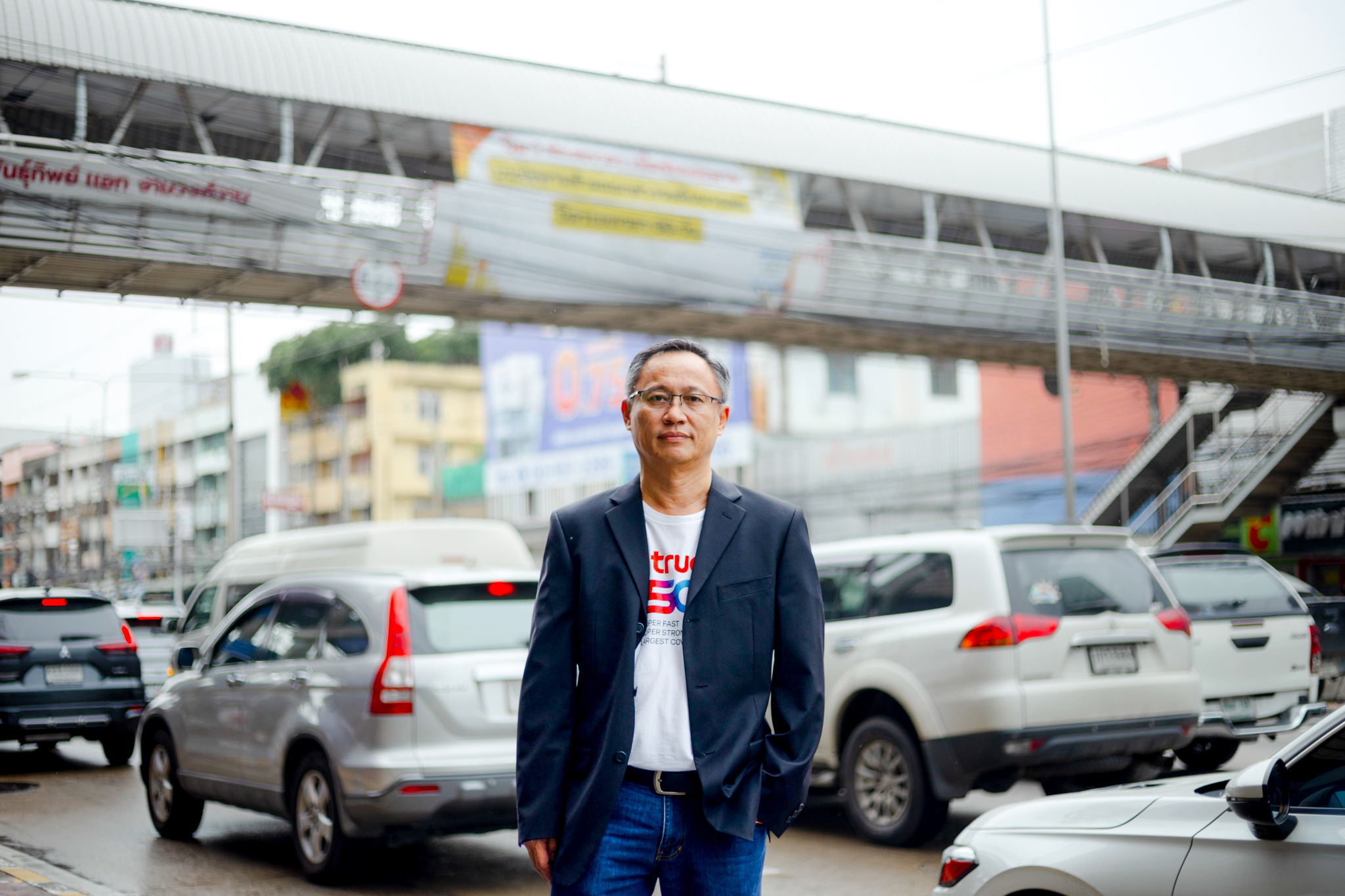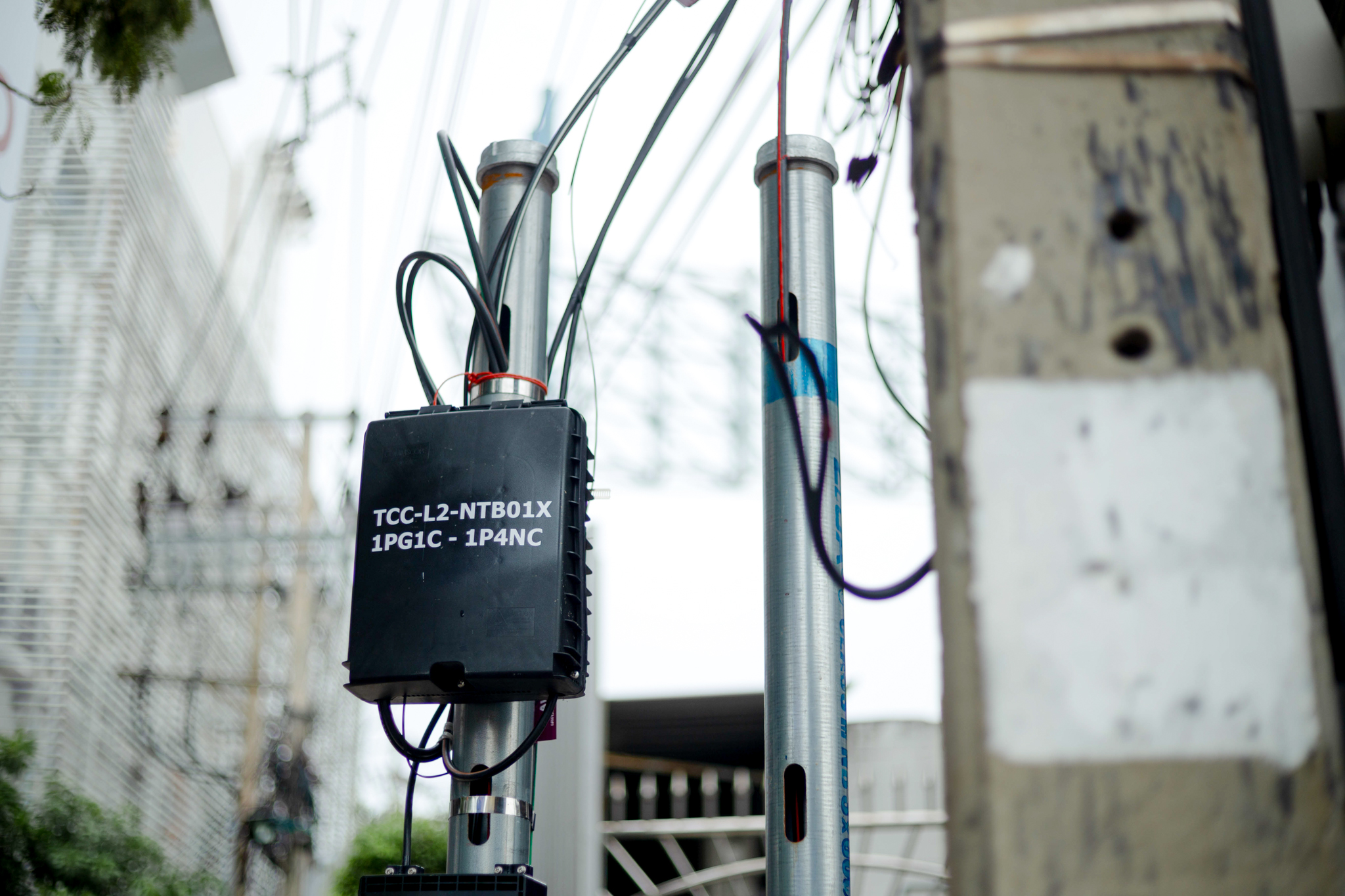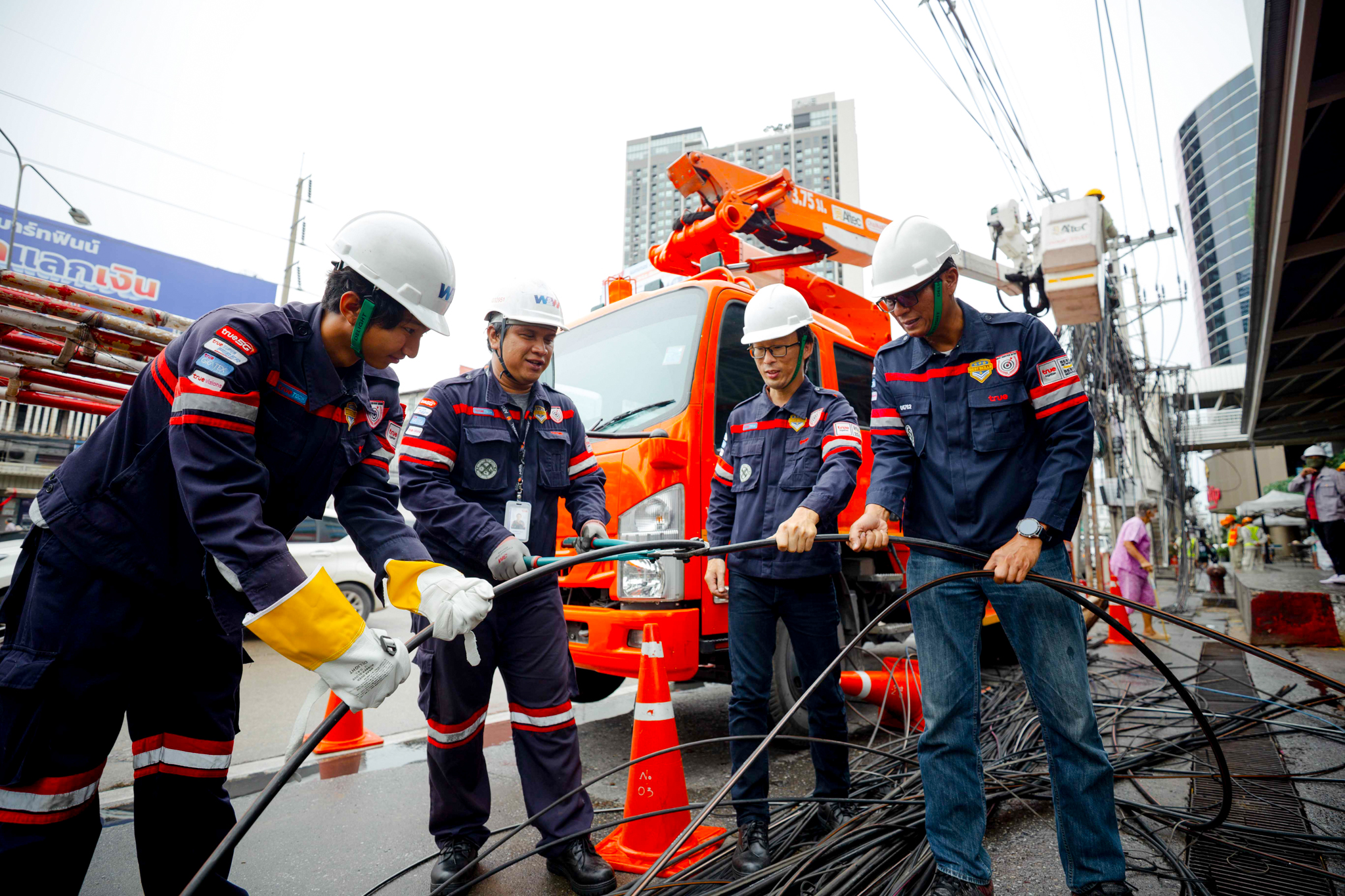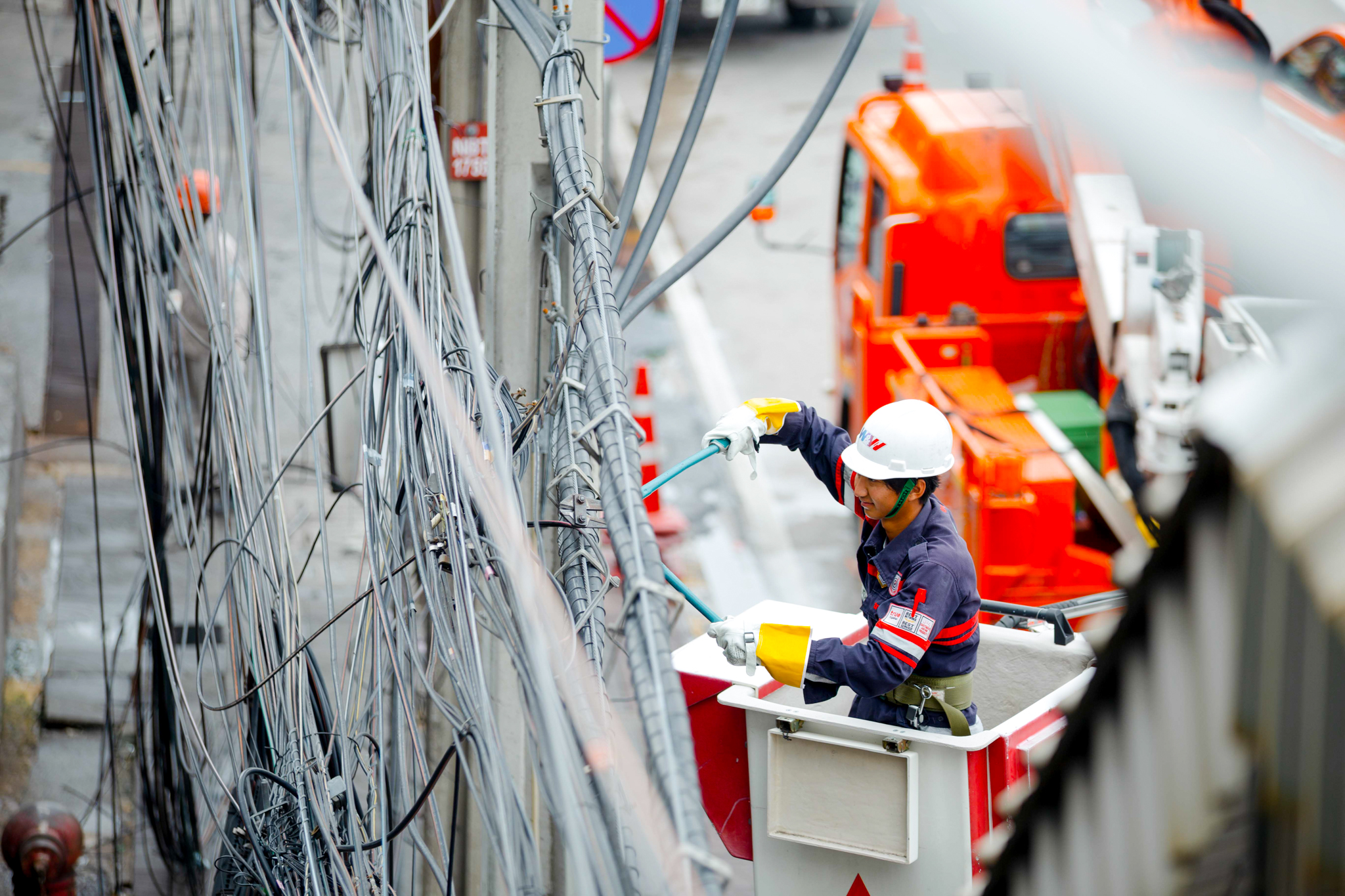The messy and tangled communication cables that we see strung along utility poles or shared widely online will soon begin to disappear. This change is the result of collaborative efforts between various public and private sector agencies determined to find a sustainable solution to the problem.
Organizing communication cables isn’t just about improving a city’s appearance. It is one of the key responsibilities of network providers. True Corporation has been investing heavily in both resources and manpower to build a solid foundation for sustainable communications, aiming to enhance the quality of life for everyone.
This article takes you behind the scenes with True team as they work to organize overhead cables and relocate them underground. True has been working with government agencies from the very beginning, and the results are now visible: more areas are enjoying neatly arranged cables, and some streets have become completely “wire-free.”
Communication Cables: The Backbone of Connectivity
The communication cables seen hanging alongside power lines originated during the expansion of landline telephone services in Thailand. As communication technology advanced and demand for internet and data services grew, network providers had to add more fiber optic cables to meet increasing bandwidth needs.
“The cables we see today include old telephone lines that haven’t been removed and new fiber optics for internet services. Some also belong to public agencies, such as CCTV networks,” explained Chayanon Udomsilapasap from True’s Right of Way team, which handles permits for underground ducts and utility pole use. “In total, there are cables from over 10 different providers and agencies.”

Even though these cables share the same utility poles, there are regulations and standards in place to differentiate them such as the cable colors and abbreviations printed on the lines.
However, in densely populated urban areas, cables often overlap chaotically, creating visual clutter that negatively impacts the city’s image. This issue has caught the attention of multiple organizations and can no longer be ignored.
“In response to this issue, in 2021 the Cabinet approved a resolution assigning the Office of the NBTC to lead an integrated plan to organize communication cables on utility poles. The initiative calls for collaboration with the Metropolitan Electricity Authority (MEA), the Provincial Electricity Authority (PEA), National Telecom (NT), the Bangkok Metropolitan Administration, local administrative organizations, and telecommunications operators. Additionally, since 2017, both MEA and PEA have implemented policies to convert overhead power lines into underground systems. This has led to a corresponding move to relocate communication cables underground. Once telecom operators complete the removal of their cables from utility poles, MEA and PEA will proceed with dismantling the poles in accordance with their schedule a process that will ultimately help enhance the cityscape,” said Pongthep Tiemboonlert from True’s Government & Public Utilities team.

Understanding the Two Approaches to Cable Management
Chayanon and Pongthep outlined the two main approaches to organizing communication cables:
1. Organizing Overhead Cables
This involves cleaning up existing cables on utility poles – removing unused lines, consolidating cables, and aligning them neatly on standard brackets set by MEA and PEA. This method is cost-effective and allows for easy maintenance. When alerts indicate damage, repairs can be carried out on-site promptly.
2. Relocating Cables Underground
This approach requires a complete overhaul of the cable infrastructure. Carried out in tandem with power line undergrounding projects, it helps make cityscapes cleaner and reduces accidents. While more expensive, it offers greater stability and safety. However, repairs can take longer if issues arise.
The undergrounding process aligns with MEA and PEA’s long-term plan to transition from overhead to underground systems, especially in central business districts, major cities, tourism areas, and key government-designated zones for visual improvement.

Building a New System from the Ground Up
“Moving cables underground means completely building a new infrastructure,” said Chayanon. “Once we decide to underground in a specific area, we must complete the underground system first, while continuing to run the existing overhead network in parallel. Then, during the switchover, the system transitions fully underground. Once that’s done, the old overhead lines are cut and removed.”
Today, many parts of Bangkok, including Asok Montri and Witthayu Roads, have undergone this transformation. These areas are now noticeably cleaner and more organized. However, achieving this transformation isn’t easy. True’s cross-functional teams must carefully plan and coordinate with various agencies to avoid disruptions to customers and pedestrians. The process includes:
1. Customer Data Collection & Site Surveys
Once routes are confirmed by the state, True’s teams compile a list of affected customers and conduct on-site surveys with contractors to map out connection points on poles and within buildings.
2. System Design & Readiness Checks
Engineers then design new underground networks to suit existing infrastructure and work with NT to check the condition of underground ducts and arrange new customer connection points.
3. Cable Installation & Network Switchover
Once the underground ducts are ready and plans finalized, teams install the new cables and begin switching customers over. Most of the work takes place at night to minimize service disruptions. True also notifies customers in advance if there may be temporary impacts.
Challenges on the Road to ‘Wireless Streets’
Even with clear plans, there are many unpredictable variables on-site. “Sometimes we can only open underground access points for a few hours a day, or even just one day a week,” Chayanon noted. “If water is found in the ducts, the team must drain it before starting work. This is why some areas take four to six months to complete.”
At this point, one might ask, “Why are utility poles still standing even after the communication cables have been moved underground?” Pongthep explained, “Although network providers have already removed all communication cables from the utility poles, the dismantling of the poles will proceed according to the electricity authority’s scheduled plan.”
Whether organizing cables overhead or relocating them underground, this mission remains a top priority for True. As a key player in Thailand’s communications infrastructure, True continues to move forward by collaborating with public sector partners to fulfill national policies and support the country’s long-term urban development in terms of safety, city aesthetics, and the overall quality of communication for all Thais.







